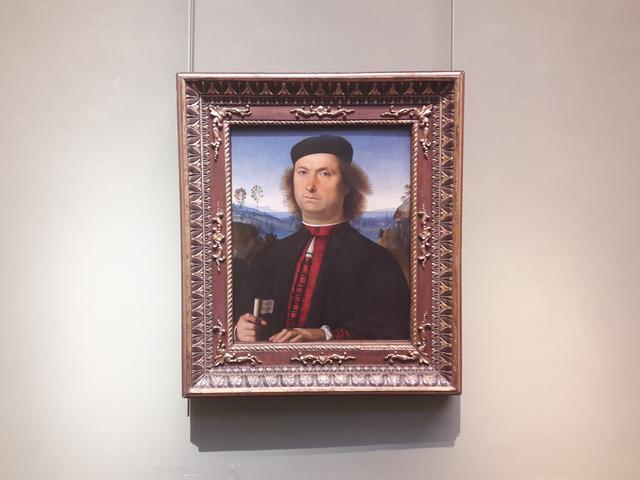Portrait of Francesco delle Opere

The portrait of Francesco delle Opere is a painting by the Italian Renaissance artist Perugino, which dates back to 1494
The first mention of the painting is in the inventory of Cardinal Leopoldo de' Medici's works of art, as a work by "Second Manner Raphael". In the 19th century it was attributed to Perugino and Jacopo Francia, and then again to Perugino by Antonio Ramírez de Montalvo, who discovered an inscription on the back. This says: "1494 DI LVGLIO PIETRO PERVGINO PINSE FRANC [ESC] O DEL LOPRE PEYNAGA."
For a long time it was considered a self-portrait and, since 1883, it was exhibited in the self-portrait gallery of the Vasario Corridor. In 1881, the subject was finally identified as Francesco delle Opere (died 1516), a gem cutter and friend of Perugino.
Francesco delle Opere is portrayed in three-quarter view, with a black beret and a cloak of the same color, a red blouse under which there is a white shirt. His hand holds a cartouche with the words Timete Devm ("Beware of God"), the beginning of a famous preaching by Girolamo Savonarola. The hands rest on an invisible parapet that coincides with the lower edge of the painting, as in contemporary Flemish works such as Hans Memling's Man with a Letter.
In addition to the attention to detail (typical of contemporary Flemish art), the painting shares with Memling also the presence of a city with pointed towers on the left. The presence of small trees and a lake in the background landscape are typical of the Umbrian school of the time.
© Tourblink